Optics for data centers. New trends
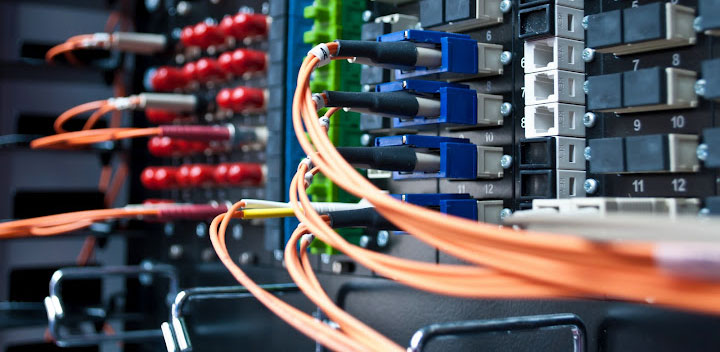
Copper, as a signaling medium, is increasingly being driven out of modern data centers - its characteristics do not at all meet the requirements of today. Optical technologies are replacing copper technologies, but only those that are capable of meeting the specific needs of data centers are taking root. Let's get acquainted with the latest news from the front edge of the struggle for the data (or with the data - how to look). In this post: long-wave multimode, silicon photonics, lens connectors, and also something about bending optical patch cords.
So the copper lines are doomed. They consume too much energy, are too slow and massive. Copper, of course, is still appropriate for an office or home LAN, but in the data center it no longer holds its place. There, even locality is now another, not "copper." Let's look at the size of the data centers now being commissioned. Switch SuperNap in Las Vegas - an area of almost 200 thousand square meters; DC NSA in Utah - 100 thousand square meters. m. Such premises in the football fields fit to measure, and not in meters. And all these fields are permeated with traffic flows that are carried along communication lines — naturally, optical.
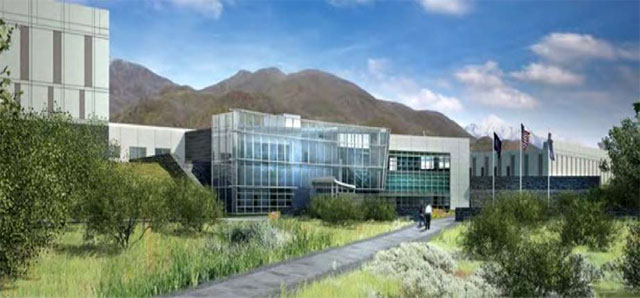
Data Center of the National Security Agency, built in 2013
')
Historically, data center used economical multimode optics, but with the growth of their size and its capabilities was lacking. Losses in a multimode fiber at a traditional wavelength of 850 nm are too large to solve the problem with half measures. The optimal solution seems to be the transition to 1310 nm - such light is less scattered in the optical cable, and in the silicon modules of network adapters, which are actively being developed now by Intel.

Turning to a wavelength of 1310 nm, we threefold increase the range of multimode optics. Naturally, any cable will not work here. And not just any - for example one that Corning produces. The core shape of its Corning ClearCurve cable is optimized for the 1310 nm beam (at the same time, it has a standard diameter of 50 μm and is compatible with 850 nm). In addition, ClearCurve has another interesting feature. It is known that optical cables are sensitive to small radius bending: a “break” of a line can easily bring it out of working condition. So, the ClearCurve cable is 10 times less sensitive to bending, which is very valuable in conditions of tight cable installation in data centers.
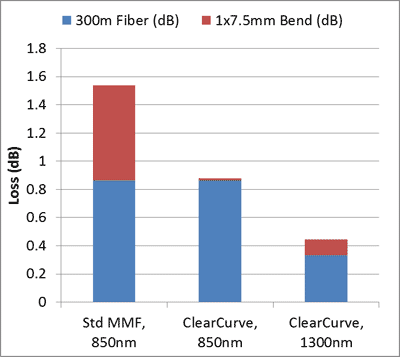
Damping in standard multimode cable and Corning ClearCurve cable
Intel and Corning jointly tested 1310 MMF technology using Intel Silicon Photonics silicon network adapters and ClearCurve cable. Experience has shown that with a cable length of 300 m, the attenuation was only 1 dB, taking into account the connectors. For the needs of the data center, these characteristics are quite enough.

Optical cable cut under the microscope
Speaking of connectors. Those who dealt with optics are surely aware that the end connectors are one of the main weak points of the optical line. The quality of the facing, the pressing force, the cleanliness of the contact - all this greatly affects the performance of the cable system, which, of course, worries the engineers of the data centers - there are enough wires in their household, and there are two more ends. Is it possible in principle to improve the reliability of optical connections? The answer is positive - for example, using the connector MHC.
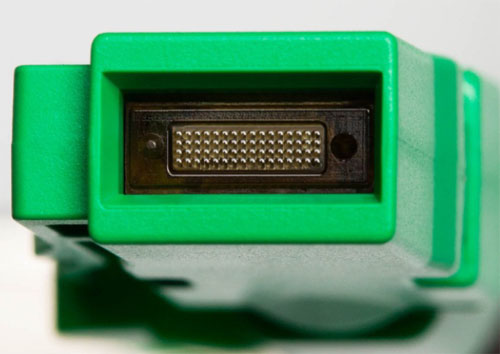
MHS connector
The main difference between MCS and other connectors is that a collimation lens is worn on the end of the conductor, expanding the light beam from 50 microns to 180. The beam expansion drastically reduces the sensitivity of the connection to any adverse factors: geometric mismatch of ends, grinding error, ingress of foreign particles and so Further. Naturally, at the same time attenuation on the connector and the return reflection decreases. However, this is not all.
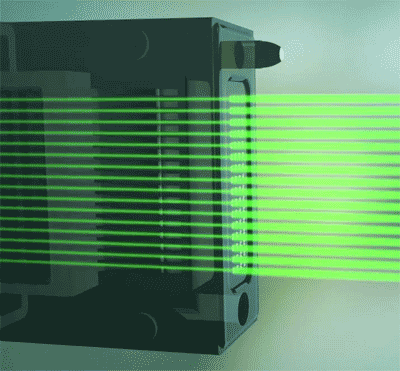
Collimation of rays in the MHS connector
Increased allowable "negligence" when connecting cables allowed to place several lines in one connector at once, and not 2 and not 10, but 64 at once. It is easy to calculate, for example, that at a speed of 25 Gbit / s per line, the total beam capacity will be 1.6 Tb / s - enough to move even the Biggest Data.
And finally, the promised information about the development of Intel in the field of silicon photonics. It's better to see once than hear a hundred times: watch the 5-minute video, which includes Justin Rattner's performance on this year's IDF and a small film demonstration of a 100-gigabit Intel-silicon adapter.
Source: https://habr.com/ru/post/195196/
All Articles